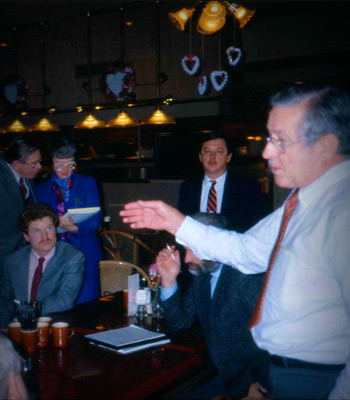Stu Bledsoe (1978-1988)
A New Model for Collaborating with Stakeholders to Address Forestry Issues
The Bledsoe era was marked by a change from contention to collaboration. In 1979 the landmark U.S. Supreme Court “Boldt Phase II decision” was upheld, and reaffirmed the rights of Washington’s Native American tribes to fish in accustomed places, and allocated 50 percent of the annual catch to treaty tribes. This decision led to cooperative efforts and negotiations between private forest landowners, tribes and state agencies that was unprecedented in this state and unequalled in other states.
In 1986, private forest landowners entered into a collaborative process with other groups who had a stake in forest resources. The goal was to resolve forest practices issues through negotiations instead of in the courtroom. The collaborative process included tribes, the timber industry, the state, and the environmental community. This was the beginning of a new way of solving natural resource management issues and resulted in the Timber, Fish & Wildlife Agreement (TFW) of 1987. TFW has become the model for the way Washington private landowners resolve natural resource issues, including flexibility and adaptive management.
In 1987 the Cooperative Monitoring Evaluation and Research (CMER) group was formed to develop forestry science in a collaborative way to help guide our actions. The CMER process is still integral to our forest practices system today. As a key co-founder of TFW, Bledsoe would often say, “We will go where the truth leads us.” ![]()

Bledsoe leads a TFW meeting which resulted in the collaborative TFW Agreement of 1987.
